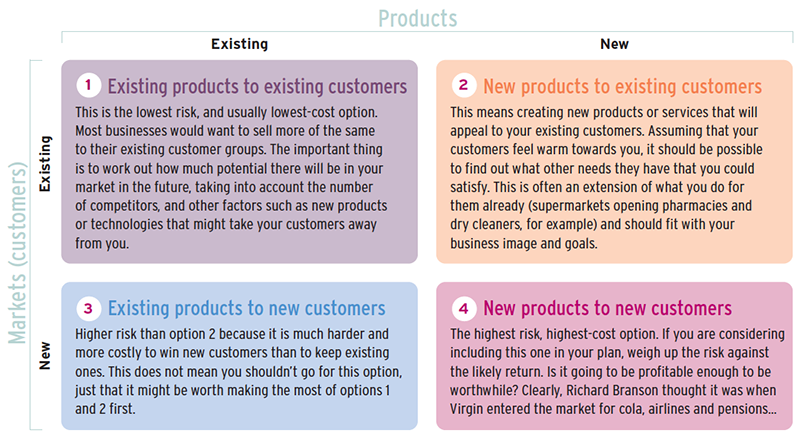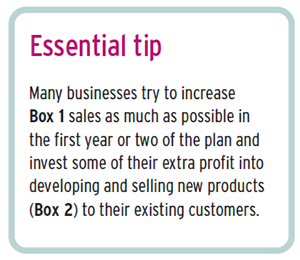No time (or inclination) to read this? Listen to Julie instead:
![]() When it comes down to it, despite all the complexity and overwhelming levels of information surrounding it, business is actually simple. It’s about selling products (or services) to people. It might not feel like it, as you wrestle with the day-to-day reality of that statement, but it’s still true!
When it comes down to it, despite all the complexity and overwhelming levels of information surrounding it, business is actually simple. It’s about selling products (or services) to people. It might not feel like it, as you wrestle with the day-to-day reality of that statement, but it’s still true!
According to the man with ‘a name to conjure with’, Igor Ansoff, you really only have four options when deciding what you are going to sell and to whom, and the surprising simplicity of these four options can be liberating when it comes to working out the details of your marketing and sales strategy.
Here are those four options:
1 You can sell more of the same to your existing or similar customers.
2 You can sell new products or services to your existing customer types.
3 You can sell the same products or services to different (new) types of customer.
4 You can sell new products or services to different (new) types of customer.
Let’s look at each of these in more detail:

Reproduced from our Essential Business Guide.
1 Existing products to existing customers (market penetration)
This is the lowest risk, and usually lowest-cost option. Most businesses would want to sell more of the same to their existing customer groups. The important thing is to work out how much potential there will be in your market in the future, taking into account the number of competitors, and other factors such as new products or technologies that might take your customers away from you.
2 New products to existing customers (product development)
This means creating new products or services that will appeal to your existing customers. Assuming that your customers feel warm towards you, it should be possible to find out what other needs they have that you could satisfy. This is often an extension of what you do for them already (supermarkets opening pharmacies and dry cleaners, for example) and should fit with your business image and goals.
 3 Existing products to new customers (market development)
3 Existing products to new customers (market development)
Higher risk than option 2 because it is much harder and more costly to win new customers than to keep existing ones. This does not mean you shouldn’t go for this option, just that it might be worth making the most of options 1 and 2 first.
4 New products to new customers (diversification)
The highest risk, highest-cost option. If you are considering including this one in your plan, weigh up the risk against the likely return. Is it going to be profitable enough to be worthwhile? Clearly, Richard Branson thought it was when Virgin entered the market for cola, airlines and pensions…
Perhaps it’s worth using the Ansoff Matrix to explore your own business options. Who knows what nuggets of profitability you might unearth…
Resources and further info
- There’s are some good Ansoff resources at the always useful website, Mind Tools
- More about market penetration and the man in whose brain it was hatched: Igor Ansoff

Leave a Reply